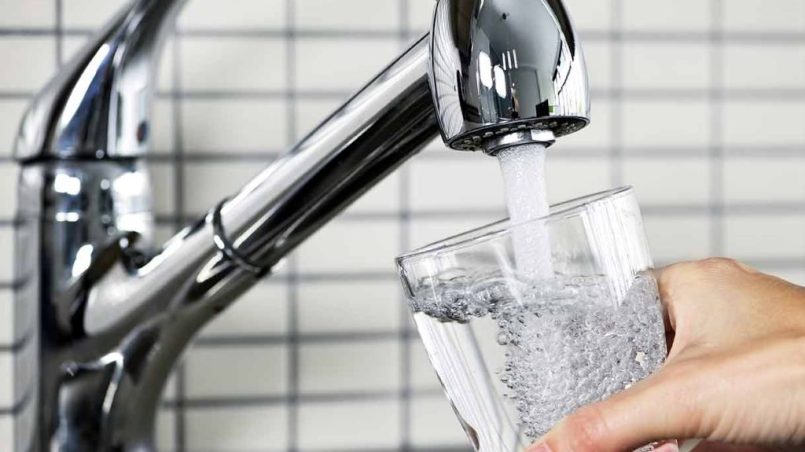Key Takeaways
- Water quality has far-reaching effects on health, comfort, and the durability of home appliances.
- Strategic upgrades, smart habits, and regular maintenance can significantly improve water clarity and taste.
- Understanding basic drinking water safety empowers better decision-making for families.
- Eco-friendly water solutions reduce waste and help protect the community’s environment.
Healthy Water Starts at Home
Good-quality water isn’t just nice to have; it’s foundational to every aspect of comfortable living. Imagine pouring a glass of water that’s perfectly clear and tastes crisp—it elevates simple everyday moments like brewing coffee, cooking pasta, or washing fresh produce. Water quality can influence your family’s sense of well-being, from the luster of your hair after a shower to the lifespan of your dishwasher. Many households trust their municipal water system to deliver safe, clean water. Yet, as water makes its journey through miles of pipes, it can collect sediment, minerals, and even contaminants from aging infrastructure. Unexpected bouts of cloudiness, odd tastes, or stains in the tub can all signal it’s time to take action. It’s no surprise that some people seek advice from a water purification company or consider their own proactive upgrades. Ensuring your water is as clean and pure as possible protects not only your pipes and appliances but also the people in your household. Many homeowners turn to solutions like filtration systems, water softeners, or reverse osmosis units for added peace of mind. These systems help remove impurities that municipal treatment may miss, offering an extra layer of protection. With clean water flowing from every tap, you’re not just maintaining your home but investing in your health and quality of life.
How to Identify Common Water Issues
Water issues manifest in different ways. For example, a faint rotten egg aroma might emerge when filling the tub, or water might look milky straight from the tap but then settle as the bubbles rise. Dishes sometimes come out with a white film, while laundry feels rough, or towels lose their fluffiness. Homeowners sometimes live with these signs for years, not realizing better water is within reach.
- Odor: Sulfur smells, similar to rotten eggs, indicate hydrogen sulfide or sulfur compounds. Metallic tastes or smells may point to iron, manganese, or copper leaching from pipes.
- Color: A brownish or reddish tint signals suspended sediments, rust, or old iron pipes. On rare occasions, green or blue tinting suggests copper corrosion, which may create pinhole leaks if not addressed.
- Taste: If water tastes salty, bitter, or strongly of chlorine, these are signs that minerals or residual disinfectants are present at higher than usual levels.
Home test kits are a user-friendly place to start, providing instant data on hardness, pH, chlorine, and more. For persistent concerns, sending a sample to a state-certified lab offers a clearer look at bacteria, heavy metals, or other contaminants. Acting on these early cues can help prevent small annoyances from escalating into larger, costlier problems with your plumbing or health.
Practical Fixes for Hard Water and Residue
Millions of households deal with “hard” water—water with high levels of calcium and magnesium. While safe for drinking, hard water can dramatically reduce the effectiveness of soaps and detergents, cause itchy skin, and leave mineral marks on everything from glassware to shower doors. The impact isn’t just cosmetic: over time, hard water deposits, known as limescale, can clog pipes and reduce the efficiency of water heaters and appliances.
- Soak showerheads, faucets, and kettle parts in vinegar to dissolve stubborn limescale build-up.
- Add laundry boosters to the wash cycle to help detergents lather more effectively and rinse away completely.
- Install faucet-mount or appliance-specific filters to protect your ice machine, coffeepot, or drinking water tap against minerals.
For homes facing persistent issues, a water softening system or whole-house filter may be needed. These investments enhance day-to-day comfort and save money in the long term by decreasing repair bills and extending appliance life.
Choosing the Right Water Filtration System
The market is flooded with options, but the right filtration solution always starts with knowledge. Not all filters are created equal: pitcher units remove chlorine but not lead, and activated carbon tackles odors but not nitrate. For many, understanding the source and specifics of their water issues guides a tailored, cost-effective choice.
- Activated Carbon is the gold standard for removing chlorine and improving taste. Available in pitchers, faucet attachments, and under-sink cartridges, it’s affordable and effective for city water supplies.
- Reverse Osmosis systems remove a wide spectrum of contaminants, including arsenic, lead, fluoride, and nitrates, making them ideal in areas with broader water quality concerns.
- Whole-House Systems: These filter every drop that enters your home, targeting sediment, iron, and scaling minerals, ensuring every tap and appliance is protected.
With innovations moving quickly, it’s smart to stay updated with trusted information. The National Geographic overview of filtration technology is a reliable source for learning about the newest advancements and products on the market and their effectiveness in different situations. Always match the system to household needs and local water challenges for the best return on investment.
DIY Tips: Maintain and Monitor Your Water Quality
Any water filter or softening device is only as good as its maintenance routine. Leaving a filter past its expiration date, for example, can allow bacteria and contaminants to accumulate, undermining water quality. Regular upkeep is simple and helps keep water fresh and systems running smoothly.
- Set reminders to change pitcher or faucet filters every 2-3 months, based on your manufacturer’s instructions and water usage.
- Flush water softeners and filtration units are recommended to prevent clogging and maximize lifespan.
- Inspect devices regularly for leaks, low pressure, or visible mold and mineral build-up.
Keeping an inexpensive water test kit in a drawer and checking quarterly is a great habit, particularly if there are any unusual changes in the water’s appearance, taste, or smell. Ongoing vigilance ensures peace of mind.
Go Green: Eco-Conscious Water Upgrades
Sustainable water practices are more accessible than ever, and they genuinely matter. From filters with biodegradable cartridges to zero-waste purification systems, homeowners have a variety of eco-friendly choices. Each adjustment contributes to a healthier planet and a more sustainable household.
- Transition to refillable water bottles and consider a countertop filtration unit for pure water without the plastic waste.
- Pick energy-efficient filtration units that automatically reduce power draw when water isn’t being used.
- Fix leaking faucets or running toilets, which can waste thousands of gallons a year without you noticing.
- Install rain barrels or grey-water systems to repurpose water for landscaping or washing vehicles.
These changes may seem small, but over time, they help lower water bills, minimize the burden on municipal water systems, and foster a culture of sustainability.
When to Seek Expert Help
While many water issues have straightforward solutions, recurring concerns may signal it’s time to engage a professional. Chronic illnesses traced to water, sudden changes in clarity or taste, or plummeting water pressure often have roots in deeper plumbing or source problems. Licensed water experts can run advanced diagnostics, pinpoint hidden sources of contamination, and prescribe tailored fixes, ensuring quality water throughout your home. In many cases, having a professional assessment offers assurance and may uncork hidden savings by preventing costly leaks or system failures before they spiral out of control.
Beyond the Home: Staying Informed About Water Issues
Proactive homeowners stay up to date with their community’s latest water reports and health advisories. Utility companies, local governments, and environmental organizations often issue yearly water quality summaries, boil notices, or updates during infrastructure repairs. Taking a few minutes to review these can help spot and address potential problems quickly. The EPA’s guide to drinking water safety provides a comprehensive overview of water sources, filtration standards, and practical tips for ensuring safe water. This unbiased resource is ideal for families who want to make informed, confident decisions about their drinking water, whether they rent an apartment, own a home, or manage a multi-family building. Clean water is more achievable than ever, thanks to simple upgrades, ongoing care, and access to dependable information. Whether you’re troubleshooting a minor problem or considering a full home water makeover, a little know-how and steady habits ensure every glass poured at home is a source of health and comfort.



